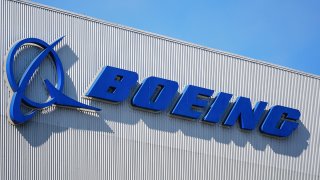Here’s a puzzle that’s been bothering me: how can we be seeing substantial tariff revenues,
and
flattish inflation,
and
a stronger-than-expected economy, all at the same time?
In other words, if U.S. companies are paying upwards of $100 billion already in tariffs, their only two choices are to pass that along to customers, or to absorb it in the form of smaller (or non-existent) profit margins. So we should either be seeing stickier inflation, or less hiring–or even layoffs. And yet we so far have neither.
Stream San Diego News for free, 24/7, wherever you are with NBC 7.
So what gives? This was the essence of what Treasury adviser Joe LaVorgna and I were
debating
on Power Lunch yesterday.
And the answer–the missing puzzle piece,
if
this rosy situation continues–is that foreign exporters are cutting their prices. Japanese automakers, for instance, reportedly
slashed prices by 19
% in June for vehicles shipped to North America. China’s factory prices slid 3.6% last month–the
sharpest
drop in two years.
Get top local San Diego stories delivered to you every morning with our News Headlines newsletter.
Think of it this way: take an import that cost $1,000 last year. Now, let’s say it faces a 20% tariff. But the exporter cuts its price by even more. Suddenly, you have tariff revenues
and
price deflation for the end consumer, without any hit to the importer’s margins.
This is an extreme example, of course. But it gives a sense of the myriad behind-the-scenes adjustments right now that could explain how we can have a sizeable amount of tariff revenues (now the fourth biggest income source for the U.S. government), without a bigger economic toll–at least, as of yet.
By Goldman’s estimate–as they, too, have been surprised by the smallish impact–foreign exporters have so far absorbed about 20% of the costs of tariffs. The rest is divvied up between businesses and consumers, but so far less is being passed along to consumers now than during the first Trump administration, they have found.
Money Report
Defense manufacturing startup Hadrian closes $260 million funding round led by Peter Thiel’s Founders Fund
Amazon cuts some jobs in cloud computing unit as layoffs continue
It seems that U.S. companies took the brunt of the remaining hit initially, which explains the confidence and stock-market shock we saw in April when the news first hit. But as time passes, they have gone from passing along
zero
of their tariff costs, to 40% of them by month three to consumers, per Goldman. If that rises to 50-60%, as Goldman expects, core PCE could hit 3.3% by December, up from 2.7% in May.
Point being, the “stagflationary” tariff outcome still remains a possibility. But for now, the tariff effect is so dissipated amongst different parties–exporters, consumers, business, and even currency markets–that it’s had a much lesser than feared impact.
“Tariffs are not inflationary. They’ll be absorbed in foreign profit margins,” LaVorgna insisted yesterday. So now the key question for stock market bulls, the Fed, and the U.S. economy is whether the coming months prove him right or not.
See you at 1 p.m!
Kelly
Twitter: @KellyCNBC
Instagram: @realkellyevans
Also on CNBC
-
Watch CNBC’s full interview with Bank of America CEO Brian Moynihan
-
NYC mayoral race impacting the wealthy. Here’s a breakdown
-
A stable central bank is important to the U.S., says Bank of America CEO Brian Moynihan







